For decades, items made of gold have been hyped by merchants for their desirability and are highly coveted by many as symbols of luxury, style and wealth. But this modern-day obsession with gold can actually be traced to ancient cultures around the world.
Gold has been at the center of human history for thousands of years and appears in historical texts as early as 4000 BC. Due to its rarity and beauty, this metal is highly sought after for its ability to be fashioned into different objects for a variety of uses.
In ancient cultures, gold was associated with wealth, power and immortality. Let’s explore some of the early uses:
Jewelry
While wearing a gold watch may be the epitome of today’s fashion for celebrities, the rich and royalty, the use of gold in jewelry can be traced back to many ancient civilizations in Egypt and Mesopotamia as well as other cultures in Korea, Japan and China.
In Korean society, rings, necklaces, earrings and bracelets made from gold were donned by both nobility and royalty. Gold crowns and belts were reserved for the royals.
In Mesopotamia and Egypt, gold was used to make ornate jewelry including headdresses, earrings, rings and pendants. Gold was a popular choice for jewelry because it does not tarnish easily, has a beautiful luster and is durable.
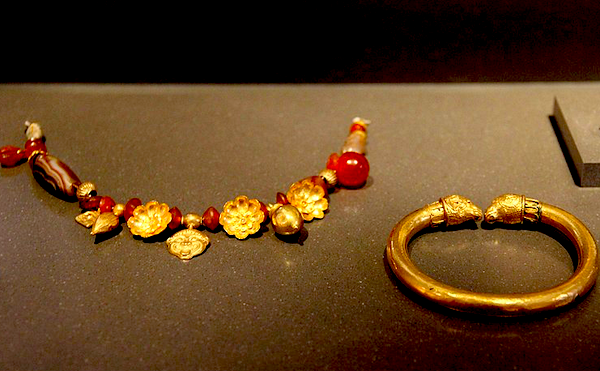
Beautifully crafted gold jewelry like this has always been a symbol of wealth and prosperity by ancient cultures.
Gifts
The beauty and value attached to gold has historically made this precious metal not only a symbol of wealth and status but also a perfect gift for a variety of occasions.
Early Chinese records have shown that gold and silver were widely used during the Christian era as gifts to express appreciation, love, respect and honor.
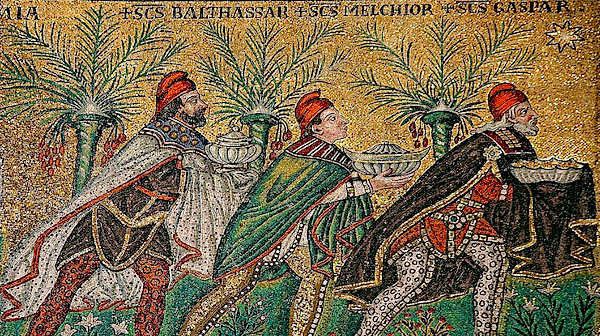
There are many references to gold in the Bible. The most well-known would have to be the story of the 3 Kings (or 3 Wise Men) visiting Jesus after His birth, bearing gifts of gold, frankincense and myrrh.
In ancient Egypt, gold was given as a gift to the gods and on other occasions it was gifted to the pharaohs and other high-ranking officials to affirm loyalty and as a sign of respect.
Similarly in ancient Mesopotamia, gold was also gifted to the gods as a symbol of appreciation and to seek divine interventions. Gold was also exchanged between leaders as gifts or given to military leaders to diffuse diplomatic tensions.
Territories that were under threat from Egypt such as Nubia, Syria and Palestine are said to have paid gold as tribute to the pharaohs.
Currency
Around 4000 BCE, the Egyptians adopted gold as a form of currency beginning with gold bars and eventually changing to gold rings. With time, other merchants across the world started accepting gold as a convenient medium of exchange. Gold ingots were used as a form of currency and for paying taxes during the Silla dynasty (57 BCE – 935 CE) in Korea and the Qing dynasty (1644-1912) in China.
Gold coins in trade was recorded in the kingdom of Lydia in the 7th century BCE. The kingdom, which covered large parts of modern-day Turkey and extended into Asia Minor, introduced the use of silver and gold coins as a medium of exchange and through expansion of its territory, they were adopted by the Greeks and others. Believed to be the first people to set up permanent retail shops, the Lydians’ introduction of metallic coinage revolutionized commerce with other regions.
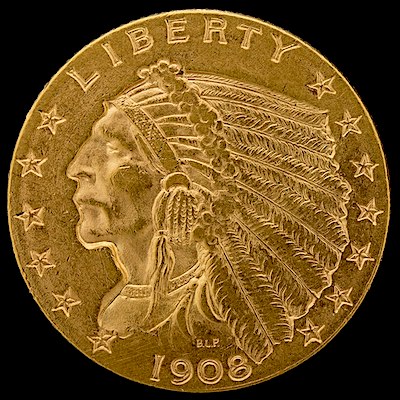
It’s only been relatively recently in history that we stopped using silver and gold as a commonly used currency.
Religious Ceremonies
For thousands of years, gold has been used in religious ceremonies and rituals across civilizations. Early Chinese records from the sixth century indicate that gold accessories were used at funerals to decorate deceased bodies. This has been confirmed by pure gold accessories found in tombs from that period.
Gold was commonly used to mold crosses, chalices and altars during the European Middle Ages. It was common for wealthy individuals among ancient Romans to be buried with jewelry, gold coins and other accessories.
Elaborate funerals for dead pharaohs in ancient Egypt and in Mesopotamia made extensive use of gold accessories. In fact, all the gold in ancient Egypt was considered to be the property of the pharaoh.
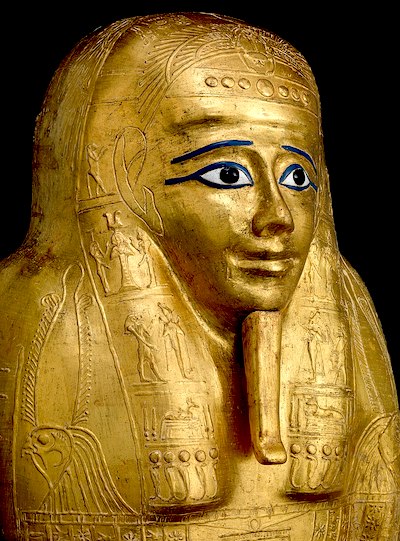
The Egyptians believed that the skin of gods was made of gold and that this metal held the power to protect the deceased in the afterlife because of its association with the sun god Ra. The deceased were often adorned with funerary masks and other jewelry made from gold while other golden objects were placed inside the tombs for them to use in the afterlife.
Gold jewelry and other artifacts such as gold crowns, belts, and amulets have been found in tombs and burial sites in ancient Egypt, Mesopotamia, Siberia, Korea, Greece and in many other cultures. In Korea, a tomb’s collection of gold pieces and other precious objects reflected the status of the deceased in society.
Read: How Did the Ancient Egyptians Find all their Gold?
Medicine
Many ancient cultures believed that gold contained medicinal properties and was used in the preparation of a variety of elixirs and potions. Ancient Indian, Chinese and Egyptian cultures identified that gold and organo-gold compounds had antitumor and antimicrobial actions against various ailments.
The Chinese were the earliest people to cure sickness using gold as early as 2500 B.C. Alchemists in ancient China devised ways of refining gold into powder and foil for formulation into useful drugs that were widely used by physicians and surgeons.
Gold was extensively used to remove mercury from ears, treat wounds, sore eyes and diseases such as syphilis, smallpox, skin ulcers as well as measles.
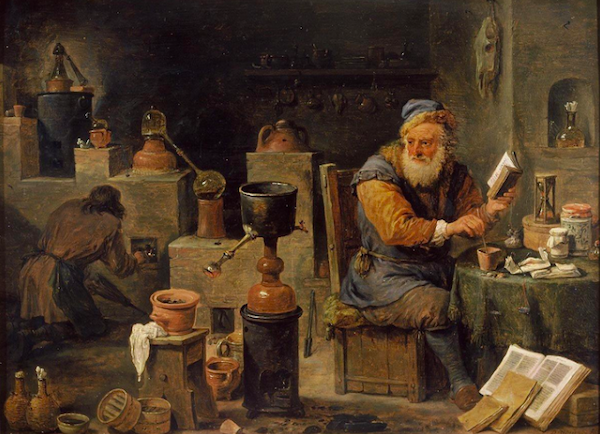
“The Alchemist” By David Teniers the Younger. ca. 1645
Decorations and Art
Ancient Egyptians used gold as decoration for buildings and pieces of furniture such as beds and chairs. The sanctuaries of temples were adorned with golden scepters and other expressions that represented artistic excellence. The pyramidions at the top of the pyramids and obelisks were also coated with gold.
Many ancient weapons crafted by the Greeks and Romans such as scabbards and swords dating from 340 BCE have stylish decorations made of gold. These pieces, some of which are displayed in the Metropolitan Museum of Art in New York, indicate the use of gold by ancient craftsmen to elaborately decorate a variety of items.
Other pieces of art made of gold from ancient civilizations have been found across the world such as the statuette of Amun from ancient Egypt (945 – 712BC) which is made of pure gold and the iconic Christian paintings from the Middle Ages that contain gold leaf used for visual enhancement.
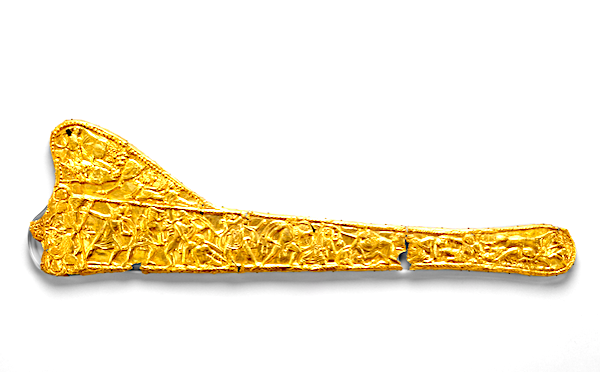
Sheet-gold decoration for a sword scabbard ca. 340–320 BCE
Early Goldsmithing – Ancient Cultures & the Lust for Gold
Origins of Gold – The Formation and Deposits found on Earth
Gold in Iraq: A Promising Future for Mining










